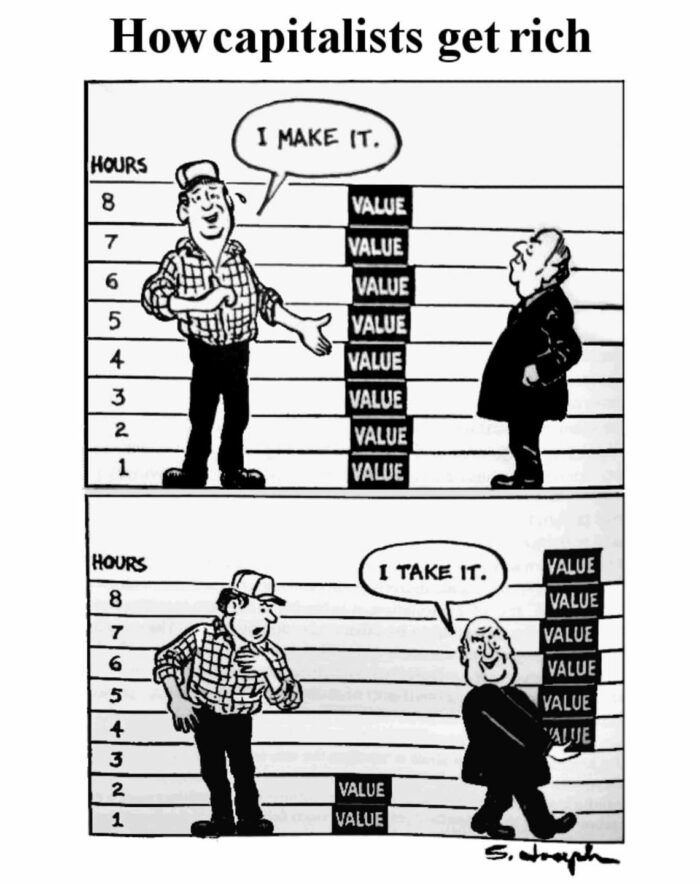Let’s talk about this image:

First, it is generally NOT true that workers at a business create value. Most workers, instead, transform existing materials with their labor into new products, or leverage existing products and materials to provide a service.
It’s only in the creative industries that employees actually create value, create something that didn’t previously exist in any form. I’m talking graphic design, web site and software development, photography, videography, architecture, etc. And in all those cases, the work product is also considered a “work made for hire” under copyright law, meaning it’s the intellectual property of the employer. And like in most every other line of work, the employees in creative industries aren’t using their own equipment.
As an example, I’m a professional software engineer. My employer provides everything I need to work: the computer (laptop, specifically), access to needed cloud services at their expense, software licenses, etc. The only thing I’m bringing to the table is my skill and expertise.
I am permanently work from home, so I do provide additional equipment for my own benefit: two 4K televisions I use as monitors (with needed adapters to connect to the laptop), mechanical keyboard, mouse, and work space. But those additions are divorced from the laptop my employer provided, so won’t change if I change employers.
In very, very few lines of work is an employee bringing anything more to the table than their skills, experience, and, where required, strength. The employer is providing everything else at their expense, not the employee’s expense: machinery and equipment, tools, materials, the space to do the work, additional personnel so the employee doesn’t need to do everything, etc. Before the employee even shows up to add their part to the equation, the employer has already sunk a lot of cost into production.
Yet the image above pretends the employer – the “capitalist” – isn’t putting anything into the production. Only taking. Whereas the reality is the “capitalist” is providing everything except what the employee is adding.
The easiest illustration of this is food service. Specifically those who are preparing the food.
The line cooks don’t provide the ingredients, and they didn’t purchase the equipment needed to cook and serve the food. The owners of the establishment provided that. Along with paying to have it all installed properly, paying for maintenance when required, replacements where necessary, cleaning equipment and supplies, the utility service (e.g. electricity, natural gas or liquid propane, water, etc.), insurance on the entire establishment and employees, and… pretty much everything else.
The employee just… shows up and does their job as agreed. Receiving for their time a paycheck.
You must be logged in to post a comment.